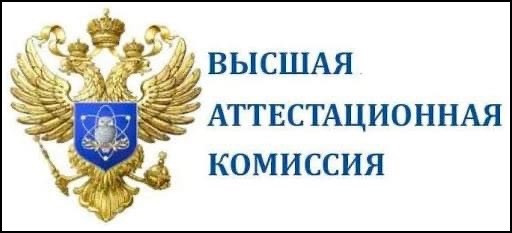Моделирование процессов распространения взвешенного вещества в морских прибрежных акваториях: 2. Тестирование и практическое применение ВВ-модели
Аннотация
Показано применение разработанной модели, описывающей последствия дноуглубительных работ в прибрежных акваториях (формирование в воде пятна мутности и распространения взвешенного вещества по акватории), а также вычисляющей значения ряда параметров, характеризующих условия перераспределения взвешенного вещества в толще воды и на поверхности дна. К таким параметрам относятся продолжительность присутствия в воде пятна мутности, изменения и распределения концентрации взвешенного вещества внутри такого пятна и накопления потерь взвешенного вещества на дне за весь период работ. Эти параметры входят в перечень характеристик, на основе которых оценивается ущерб биоресурсам (например, бентосным организмам) за счет нарушений естественных условий их обитания после завершения работ по байпассингу.
Литература
- Афанасьев С.В., Рянжин С.В. Численное моделирование горизонтальной турбулентной диффузии в мелком озере // Вод.ресурсы. 1986. Т. 13. № 1. С. 87–94.
- Методические указания по расчету распространения зон мутности при дноуглублении и дампинге на акваториях ВМФ. М.: МО РФ, 2003. 80 с.
- Нефть и окружающая среда Калининградской области. Т. II: Море / под ред. В.В. Сивкова, Ю.С. Каджояна, О.Е. Пичужкиной, В.Н. Фельдмана. Калининград: Терра Балтика, 2012. 576 с.
- Подгорныи К.А. Моделирование термического режима Рыбинского водохранилища // Материалы V Международной научной конференции «Теоретические и прикладные
аспекты современной лимнологии» (г. Минск, 10–13 ноября 2009 г.). Минск: БГУ, 2009а. С. 90–93. - Подгорныи К.А. Моделирование пространственно-временной динамики полей температуры воды в Невской губе Финского залива // Труды VII конференции «Динамика и термика рек, водохранилищ и прибрежной зоны морей» (г. Москва, 23–25 ноября 2009 г.) М.: РУДН, 2009б. С. 207–215.
- Подгорныи К.А. Математическое моделирование трансформации соединений биогенных элементов в экосистемах нестратифицированных водоемов. Дис... канд. физ.-мат. наук: 03.01.02, 25.00.28. М., 2012. 488 с.
- Подгорныи К.А., Леонов А.В. Моделирование процессов распространения взвешенного вещества в морских прибрежных акваториях. I. Описание модели // Океанологические исследования. 2017. Т. 45. № 1. С. 109–141. DOI: 10.29006/1564-2291.JOR-2017.45(1).10.
- Подгорныи К.А., Поддубныи С.А. Использование системы уравнений теории мелкой воды для моделирования течений в Рыбинском водохранилище // Материалы
Всероссийской научно-практической конференции (г. Пермь, 24–26 мая 2005 г.). Пермь: Перм. ун-т, 2005. С. 62–66. - Подгорныи К.А., Поддубныи С.А. Моделирование формирования и внутригодовой изменчивости структуры течений в устьевой зоне Рыбинского водохранилища // Материалы V Международной научной конференции «Теоретические и прикладные аспекты современной лимнологии» (г. Минск, 10–13 ноября 2009 г.). Минск: БГУ, 2009. С. 97–100.
- Поддубныи С.А., Подгорныи К.А. Использование двумерной математической модели для изучения термического режима Рыбинского водохранилища // Труды VII конференции «Динамика и термика рек, водохранилищ и прибрежной зоны морей» (г. Москва, 23–25 ноября 2009 г.). М.: РУДН, 2009. С. 216–224.
- Chao X., Jia Y., Shields Jr. F.D., Wang S.S.Y., et al. Three-dimensional modeling of cohesive sediment transport and wind wave impact in a shallow oxbow lake // Adv. Water Res. 2008. Vol. 31. P. 1004–1014.
- Hamilton D.P., Mitchell S.F.An empirical model for sediment resuspension in shallow lakes // Hydrobiologia. 1996. Vol. 317. P. 209–220.
- Lou J., Schwab D.J., Beletsky D., Hawley N. A model of sediment resuspension and transport dynamics in southern Lake Michigan // J. Geophys. Res. 2000. Vol. 105. P. 6591–6610.
- Mehta A.J., Partheniades E. An investigation of the depositional properties of flocculated fne sediment // J. Hydraul. Res. 1975. Vol. 13. P. 361–381.
- Podgornyj K.A. Mathematical modeling of spatial-temporal dynamics of current felds in the Neva Bay, the Gulf of Finland // Proceedings of the 2nd International Conference (school) on Dynamics of Coastal Zone of Non-Tidal Seas. Baltiysk (Kaliningrad Oblast), 26–30 June 2010 / Ed. by B. Chubarenko. Kaliningrad: Terra Baltica, 2010. P. 225–231.
- Shore protection manual. U.S. Army engineer waterways experimental station. Coastal engineering research centre. Vol. I, 4th edition. PO Box 631, Vicksburg, Mississippi 39180. 1984. 652 p.
- Stanev E.V., Dobrynin M., Pleskachevsky A., Grayek S., et al. Bed shear stress in the southern North Sea as an important driver for suspended sediment dynamics // Ocean Dynamics. 2009. Vol. 59. P. 183–194.
- Ziegler C.K., Nisbet B.S. Long-term simulation of fne-grained sediment transport in large reservoir // J. Hydraul. Eng. 1995. Vol. 121. P. 773–781.
Передача авторских прав происходит на основании лицензионного договора между Автором и Федеральным государственным бюджетным учреждением науки Институт океанологии им. П.П. Ширшова Российской академии наук (ИО РАН)













